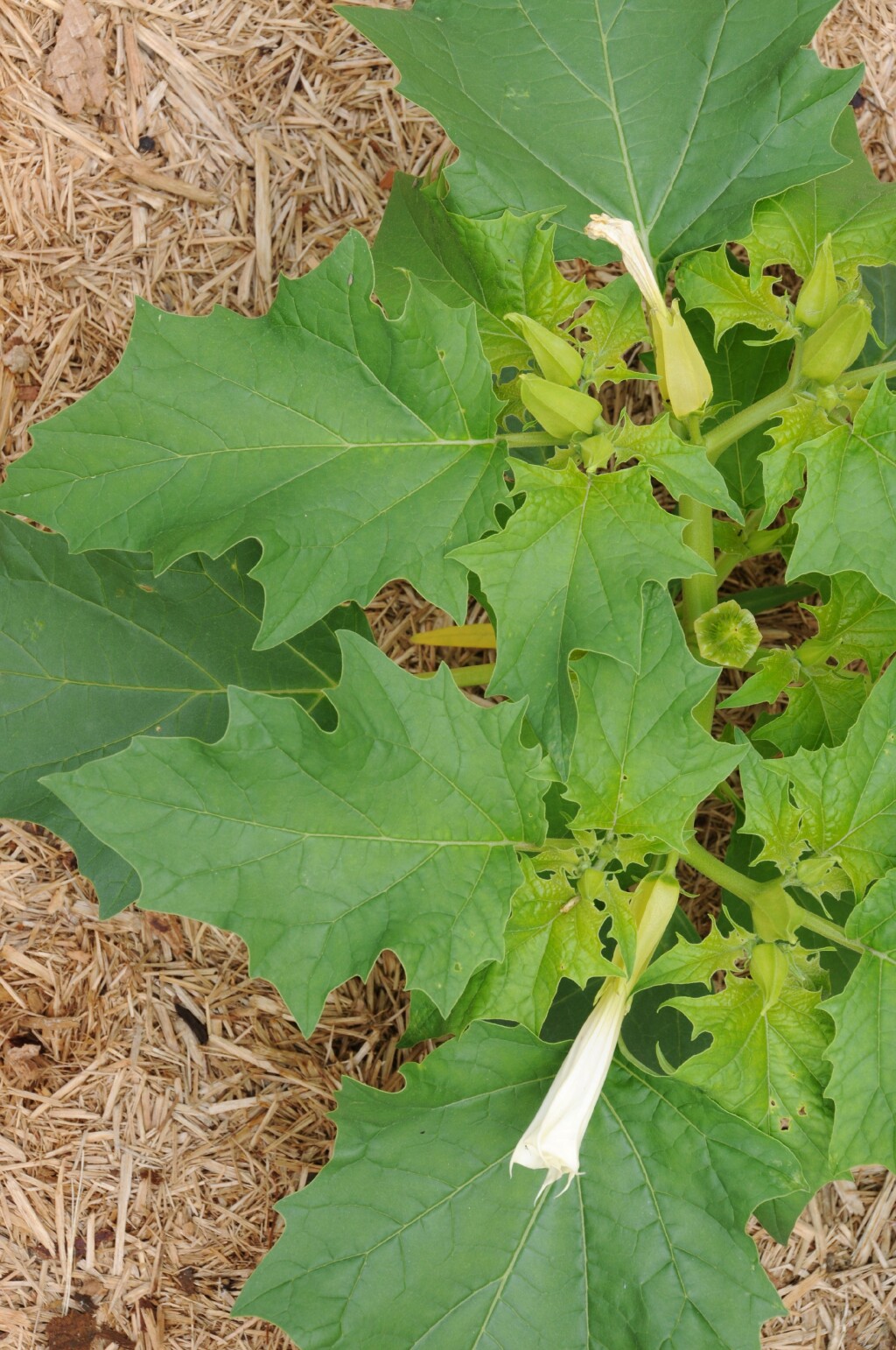Datura
Annual (in Victoria) or short-lived perennial herbs, erect, glabrous or pubescent with glandular or simple non-glandular hairs. Leaves alternate, simple, entire or lobed, petiolate. Flowers solitary in forks of stems, bisexual, regular; calyx tubular, usually 5-lobed, occasionally 3-, 4- or up to 9-lobed, base persistent in fruit; corolla usually funnel- or trumpet-shaped, shortly 5-lobed or apparently 10-lobed, white or variously coloured, corolla-limb folded and twisted in bud; stamens usually 5, equal, inserted in lower half of corolla-tube, anthers 2-celled, basifixed, loosely cohering around style, dehiscing by longitudinal slits; ovary 2-celled, or falsely 4-celled in lower half, stigma 2-lobed. Fruit a 2–4-celled spiny or tuberculate capsule, opening by 4 apical valves or irregularly, subtended by persistent enlarged reflexed calyx-base; seeds reniform to more or less D-shaped, thick or flat, minutely pitted.
10 species, from tropical and warm-temperate Central and South America; 6 species introduced to Australia.
Some species have long been used as narcotics; most are poisonous to stock.
Jeanes, J.A. (1999). Solanaceae. In: Walsh, N.G.; Entwisle, T.J., Flora of Victoria Vol. 4, Cornaceae to Asteraceae, pp. 332–365. Inkata Press, Melbourne.
 Spinning
Spinning



